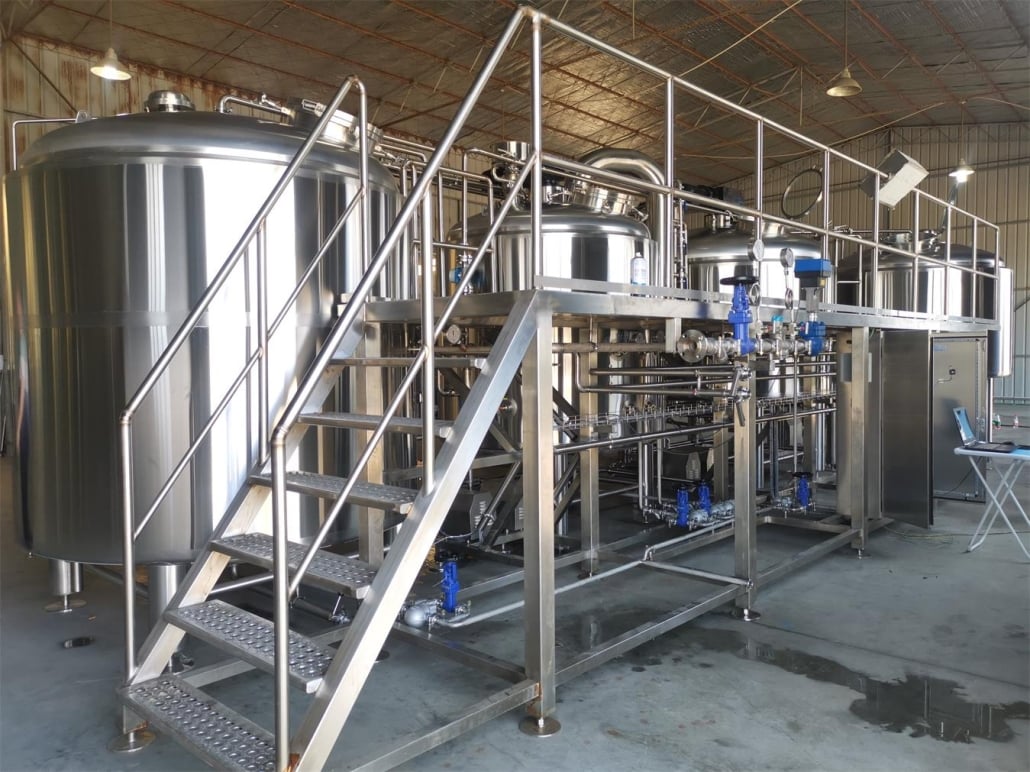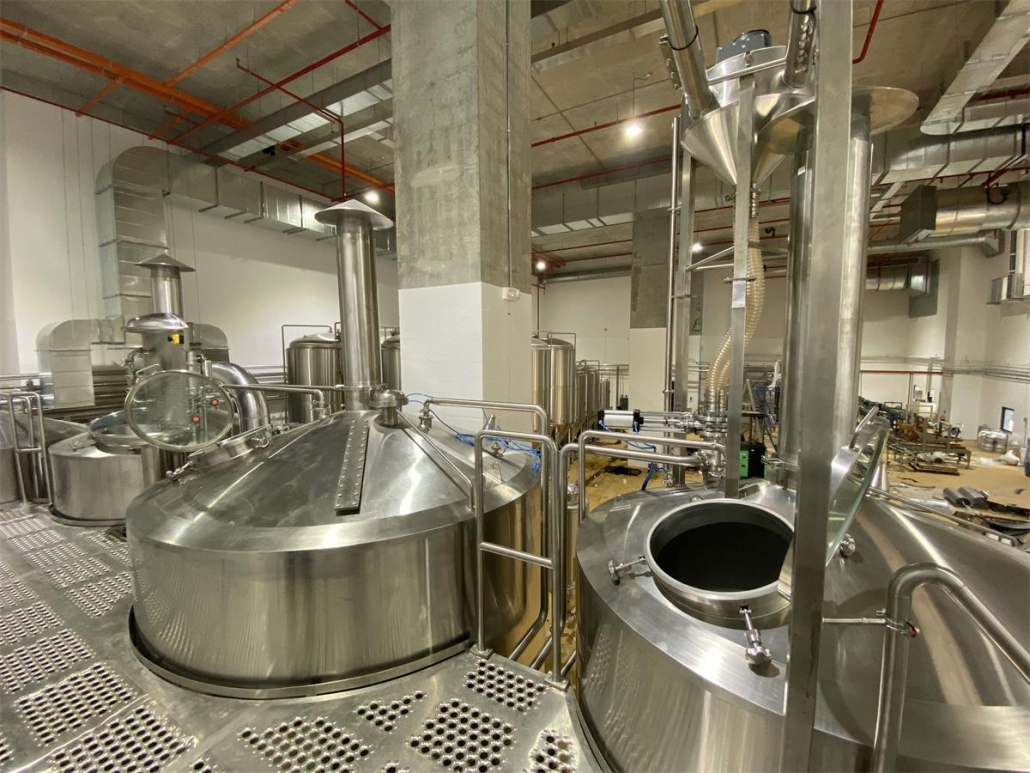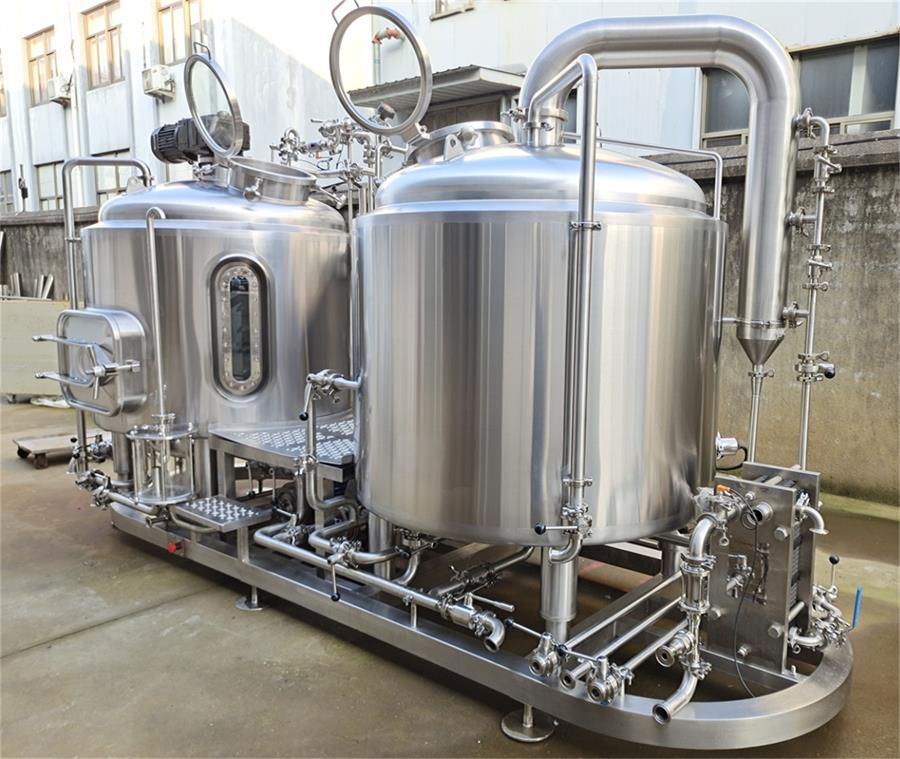Overview of 8 BBL Fermenter
An 8 barrel (BBL) fermenter is a large fermentation vessel used by commercial craft breweries and microbreweries. With a capacity of 8 barrels or 249 gallons (944 liters), an 8 BBL fermenter allows small to mid-sized breweries to produce batches of beer for distribution and sale.
This guide covers key considerations when investing in an 8 BBL fermentation system from sizing, designs, suppliers, installation and operation. We compare the pros, cons and costs of different 8 BBL fermenter types from stainless steel to plastic conical, as well as customized tiered systems. Read on for advice on choosing the right 8 BBL fermentation equipment for your brewery.
8 BBL Fermenter Equipment Guide
There are several equipment components that make up an 8 BBL fermentation system:
| Equipment Type | Description |
|---|---|
| Fermenter Vessel | The primary enclosed tank where fermentation occurs. Available in stainless steel, plastic or wood. Conical and cylindrical shapes. |
| Temperature Control | Controls fermentation temperature for optimal yeast activity. Cooling jackets, glycol chiller systems or heat exchangers used. |
| Mixing System | Mixes yeast and wort. Paddle systems for cylindrical, integrated impellers for conical fermenters. |
| Racking System | Transfers fermented beer out of tank into bright tanks or brite beer tanks. |
| CIP Equipment | Clean-in-place spray balls/heads, pumps and chemicals for automated cleaning. |
| Air Filtration | Prevents airborne contamination during fermentation. HEPA or sterile air filters used. |
| Monitoring System | Tracks temperature, density/gravity and fermentation progress. Sensors connected to central computer. |
| Accessories | Includes sight glasses, stands, ladders, pressure relief valves and more. |

Types of 8 BBL Fermenter Vessels
There are three main types of fermenter vessels used in 8 BBL commercial brewing systems:
| Fermenter Type | Description |
|---|---|
| Stainless Steel | Most common type made entirely from stainless steel (grade 304 or 316). Durable, easy to clean and customize. Conical or cylinder shape. |
| Plastic Conical | Made from durable food-grade polymer plastic resin. Lightweight, budget friendly. Limited customization available. Conical shape. |
| Wooden & Alternative | Barrels and wood fermentation vessels also used. Porous material imparts flavor. Requires extra cleaning/care. Small niche use. |
8 BBL Fermentation Process
The typical fermentation process using an 8 BBL fermenter system involves:
- The fermenter vessel, chiller, and accessories are thoroughly cleaned and sanitized prior to use.
- 8 barrels (249 gallons) of cooled wort is transferred into the fermenter.
- Yeast is added (pitched) to begin the fermentation.
- The fermentation temperature is maintained using the chilling system or jackets. Internal mixing may occur.
- Gravity/density readings are taken throughout the 3-7 day fermentation.
- Once complete, the young beer is transferred (racked) to conditioning tanks.
- The fermenter is cleaned and sanitized for the next use.
Careful control of fermentation parameters like temperature, agitation, pitching rates and yeast health is critical to producing consistent, quality beer. Our 8 BBL fermentation equipment provides the features needed for tightly managed fermentation control.
8 BBL Fermenter Capacities, Designs and Layouts
Commercial 8 BBL fermentation systems are available in different configurations when it comes to capacities, number of vessels, overall dimensions, and layouts.
| Parameter | Options |
|---|---|
| Capacity | 8 barrel = 31.5 hectoliters = 249 US gallons = 944 liters. 7.75 and 8.5 BBL sizes also common. |
| Number of Vessels | Single 8 BBL tanks or multiple x 8 BBL for larger volumes and cellaring. |
| Dimensions | Varies by brand but ~9 ft tall x 5 ft diameter is typical. Larger diameters for cylindrical tanks. |
| Floor Footprint | Single slim conical tank has small 3-5 ft footprint. Multiple tanks in series/rows require more line space. |
| Layout | Linear side-by-side line up most common. Stacking/vertical configurations for restricted spaces. |
| Customization | Fully customizable accessories, ports, finings, and fermentation control systems available. |
The layout, vessel dimensions, number, floorspace and ease of operation should be carefully planned when designing a brewery’s fermentation area.
Experienced suppliers can provide CAD drawings/renderings showing proposed equipment configurations based on your facility constraints, production goals and budget. This allows virtual planning of your future fermentation room setup for best results.
8 BBL Fermenter Suppliers & Pricing
There is a wide range of 8 BBL fermenter equipment suppliers across the globe. Prices vary considerably based on features, quality and customization.
| Supplier | Location | Price Range |
|---|---|---|
| Rolec Craft Brewing | UK & Europe | $15,000 to $22,000 |
| Craft Alchemy | USA | $18,000 to $35,000 |
| JV Northwest | USA & Canada | $22,000 to $50,000 |
| Craftwerk | Australia & NZ | $20,000 to $36,000 |
| ABS Commercial | China | $8,000 to $15,000 |
| GPI | Global | $19,000 to $45,000+ |
| Stout Tanks | USA | $12,000 to $100,000+* |
*Wide price range for Stout reflects customizable features and tiered turnkey systems
In determining the ideal 8 BBL fermenter supplier for your brewery, key factors to consider include:
- Location/shipping costs & import duties
- Budget constraints
- Type of fermenters available (stainless, plastic, hybrid)
- Quality and durability of tanks
- Design customization flexibility
- Turnkey systems vs standalone tanks
- Available fermentation accessories
- Process control automation & monitoring options
- Additional services like installation support, staff training, and after-sales assistance
Get detailed quotes from multiple vendors outlining exactly what is included before committing to purchase 8 BBL fermentation equipment.
8 BBL Fermenter Installation, Operation & Maintenance
Properly installing, cleaning and maintaining an 8 BBL fermentation system ensures maximum production uptime plus clean, consistent beer.
| Activity | Details |
|---|---|
| Installation | Performed by equipment supplier and/or brewery engineers. Requires rigging equipment to safely lift in place. Plumbing, wiring, controls setup next. |
| Cleaning & Sanitation | Follow CIP protocols using adequte hot water, chemicals (acid/caustic), filtration. Clean after every fermentation turn. |
| Preventative Maintenance | Regularly inspect fittings, sensors, cooling lines for issues. Lubricate, replace gaskets/seals periodically. |
| Operation & Monitoring | Use chiller, mixer, racking as needed per recipe. Watch fermentation progress with hydrometer readings 2-3 times daily. |
| Record Keeping | Note fermentation activity, gravities, taste evaluations and troubleshooting details for data analysis. |
Invest in staff safety procedures and training on proper tank CIP methods, fermentation SOPs, sensory evaluation, data logging, and preventative maintenance scheduling to get the most from your 8 BBL tanks.
How To Choose an 8 BBL Fermenter Supplier
Follow these tips when selecting a fermentation equipment vendor:
| Consideration | Guidance |
|---|---|
| Technical Ability | Ensure supplier has qualified engineers and support staff with fermentation expertise. |
| Track Record | Prefer well established vendors (5+ yrs) with proven reputation and many prior installs. |
| Customization Skills | Seek suppliers adept at tailored equipment specification to match brewery goals and constraints. |
| Services | Choose turnkey vendors that handle full project management from design to delivery to install and training. |
| References | Speak to current users about their satisfaction working with the company and equipment reliability/longevity. |
| Site Survey | Some firms offer to visit onsite if possible to ensure proper sizing recommendations and floorplan integration. |
Visiting existing microbreweries using a company’s tanks firsthand provides the best gauge of real-world function and durability. Validate any claims of innovation or unique offerings by the sales representative.
Comparing 8 BBL Fermenter Pros, Cons & Limitations
There are both advantages and drawbacks associated with each type of 8 BBL fermentation system:
| Fermenter Type | Pros | Cons |
|---|---|---|
| Stainless Steel Conical | Durable, customizable, efficient conical design | Expensive, heavy, reduced thermal dynamics vs plastic |
| Plastic Conical | Lower cost, lighter weight for transport / installation, good thermal properties | Less durable long term, minimal customization, aging effects |
| Wooden Barrels | Unique flavors imparted, historical aesthetic | High maintenance cleaning/replacing, risk of contamination |
No fermentation equipment option is perfect across all criteria. Stainless steel conicals offer the best balance but have higher investment costs. Lower cost plastic conicals work well for budget conscious breweries starting out if you can accept the drawbacks above. Specialty wood barrels fill niche applications rather than replacing stainless as a mainstream solution.
Evaluate all advantages and limitations carefully before investing in an 8 BBL fermentation system. On-site trials at operating breweries provide the best way to assess direct hands-on experience with different fermenter types.

FAQ
Q: What extra floorspace and ceiling height is needed for an 8 BBL fermenter system?
A: Expect to allocate ~25-100 ft2 per conical 8 BBL fermenter tank. Cylindrical tanks need more footprint. Ceiling height should be 12+ feet ideally to accommodate top-mounted components.
Q: Can I stack 8 BBL fermenter tanks vertically?
A: Yes, stacking configurations are definitely possible but require reinforced flooring and platforms rated for the heavy loaded weight. Professional engineering guidance suggested for multi-tier builds.
Q: Is direct steam injection possible during fermentation?
A: Yes, many 8 BBL fermenters allow direct steam injection into the cone for heating if temperature spikes are needed at points in the fermentation timeline. Approximately 5-10 psi overpressure is created depending on the injection rate so the fermenter must have adequate PRV sizing and pressure rating. The direct steam method generates turbulence so forced mixing with paddles or impellers should be turned off during injection cycles. Use a steam PRV and condenser to manage pressure spikes on the fermenter side. Sterile filtration of the steam is critical for food safety.
Q: How many turns or batches can you achieve per week with a single 8 BBL fermenter?
A: Assuming a 5 day average fermentation, you can achieve approximately 1.4 turns per week with one 8 BBL vessel. To get 3+ turns weekly requires multiple 8 BBL tanks. The fermentation duration impacts turns as does the efficiency of cleaning and sanitation protocols between cycles.
Q: What are the power requirements to operate an 8 BBL glycol chiller system?
A: An 8 BBL fermenter’s glycol chiller cooling system typically requires single phase 15 Amp at 208V ( North America) or 220V (global). This powers the chiller compressor, glycol pump and control panel. Larger 3 phase chillers are an option for very high peak cooling loads. Electrical requirements also depend on auxiliary equipment like CIP pumps. Always confirm power specs with your equipment supplier.
Additional FAQs About 8 BBL Fermenters
1) What pressure rating should an 8 BBL fermenter have for modern pressure fermentation?
- Most breweries select 15 psi (1 bar) working pressure with a 30 psi design test. This supports spunding, pressure transfers, and light pressure fermentation while keeping safety margins.
2) How much glycol cooling capacity is required per 8 BBL unitank?
- Plan for 1.5–2.0 tons of cooling per actively fermenting 8 BBL vessel in warm climates, or 1.0–1.5 tons in temperate cellars. Include 20–30% headroom for crash cooling multiple tanks simultaneously.
3) What CIP cycle time is typical for an 8 BBL fermenter?
- A standard cycle is 45–75 minutes: pre-rinse (10–15 min), caustic wash 1–2% at 140–160°F (20–30 min), intermediate rinse (5–10 min), acid wash 0.5–1% (10–15 min), final rinse and sanitizer (5–10 min). Verify spray-ball coverage via riboflavin test quarterly.
4) Are unitanks preferable to dedicated fermenters plus brite tanks at 8 BBL scale?
- Unitanks add flexibility (ferment, carbonate, serve) and reduce transfers, which is ideal at 8 BBL. However, busy taprooms may still benefit from a separate brite tank for faster turnaround and packaging throughput.
5) What sensors add the most value at this scale?
- Core: dual RTD temperature probes, pressure transducer, and hydrostatic (or load-cell) volume measurement. Add-ons: inline dissolved oxygen (DO) at knockout, and a Wi-Fi gateway for remote alerts. These improve consistency and help achieve repeatable 8 BBL fermentations.
2025 Industry Trends: 8 BBL Fermenter Market, Tech, and Costs
- Consolidation and sourcing: Lead times for stainless 8 BBL unitanks have stabilized to 6–10 weeks for standard SKUs due to improved steel supply, but custom ports/jacket zones still run 12–16 weeks.
- Energy efficiency: Breweries are standardizing on higher-efficiency scroll chillers and variable-speed glycol pumps, cutting cellar energy by 12–25%.
- Automation lite: Affordable cloud controllers with predictive fermentation curves are becoming common at the 8 BBL tier.
- Safety and compliance: More vendors are offering ASME and CE-stamped 1–2 bar unitanks as standard to enable pressure fermentation and closed-loop CIP.
- Sustainability: CO2 recovery “micro” skids sized for 5–15 BBL brewhouses are rolling out, reducing packaged CO2 purchases by 30–60% for busy taprooms.
2025 Benchmarks and Market Snapshot (North America/EU)
| Metric | 2023 Avg | 2024 Avg | 2025 YTD | Source/Notes |
|---|---|---|---|---|
| New 8 BBL stainless unitank (installed) | $18,500 | $17,800 | $17,200 | Vendor quotes (USA/EU mid-market) |
| Typical lead time (weeks) | 10–14 | 8–12 | 6–10 | Aggregated supplier estimates |
| Glycol kWh per 8 BBL batch (ferment + crash) | 95–120 | 85–110 | 75–100 | Field reports, energy audits |
| Adoption of pressure-capable unitanks | 55% | 63% | 71% | Distributor sales mix |
| Cloud-enabled tank control at 8 BBL | 28% | 39% | 52% | Controller OEM shipment data |
| Micro CO2 recovery adoption (5–15 BBL) | 2% | 6% | 12% | Early-adopter programs |
Data compiled from equipment vendor quotes, brewery energy audits, and controller OEM shipment summaries. Cross-check with Brewers Association benchmarking and regional guild surveys:
- Brewers Association benchmarking: https://www.brewersassociation.org/
- Carbon capture tech overview (IChemE): https://www.icheme.org/
- EU energy efficiency in food and drink sector (EEDA): https://energy.ec.europa.eu/
Latest Research Cases
Case Study 1: Reducing Energy in 8 BBL Fermentation via Variable-Speed Glycol (2024/2025)
Background: A 1,000-bbl/year brewpub running four 8 BBL conical unitanks saw high glycol energy use during simultaneous crash cools.
Solution: Implemented variable-speed glycol pumps, added a second jacket zone per tank cone, and retuned setpoint differentials with a cloud controller.
Results: 18% reduction in fermentation-and-cellar electricity over 6 months; crash time unchanged; reduced overshoot and fewer temperature alarms. Reference: ASHRAE brewery case abstracts and BA sustainability resources: https://www.brewersassociation.org/sustainability/
Case Study 2: Pressure Fermentation to Shorten Tank Residency (2024)
Background: A regional microbrewery aimed to increase turns on two 8 BBL fermenters during peak summer.
Solution: Shifted to spunded fermentations at 10–12 psi after high kräusen; standardized closed transfers; added inline DO monitoring at knockout.
Results: Average tank days dropped from 10.2 to 8.6 (−16%), with improved package DO (≤40 ppb) and stable sensory quality. Sources: MBAA Technical Quarterly discussions and supplier white papers on spunding best practices: https://www.mbaa.com/publications/tq/Pages/default.aspx
Expert Opinions
- John Mallett, VP of Brewing and Quality, Bell’s Brewery
Viewpoint: “At smaller scales like an 8 BBL fermenter, quality is won with fundamentals—sanitary design, precise temperature control, and repeatable yeast handling. Pressure capability is valuable, but only when you’ve nailed your CIP and oxygen control.”
Source: Industry talks and writings; see MBAA and BA conference proceedings. - Laura Ulrich, Brewer and Past President, Pink Boots Society
Viewpoint: “Unitank flexibility matters at 8 BBL. Closed transfers and smart controllers reduce variability, letting small teams do more with fewer tanks—especially when rotating lager and IPA production.”
Source: Pink Boots Society panels and BA seminars: https://www.pinkbootssociety.org/ - Dr. Charlie Bamforth, Distinguished Professor of Malting & Brewing Science
Viewpoint: “Measuring is not micromanaging. A pressure transducer, reliable temperature probes, and robust DO practices are transformative, even in modest 8 BBL fermenters.”
Source: Public lectures/interviews; see IBD and UC Davis brewing resources: https://www.ibd.org.uk/
Practical Tools and Resources
- Brewers Association Tank and Cellar Best Practices: https://www.brewersassociation.org/
- MBAA Technical Quarterly (fermentation, CIP, CO2 management): https://www.mbaa.com/publications/tq/Pages/default.aspx
- IBD Knowledge Centre (fermentation control modules): https://www.ibd.org.uk/
- PID/Glycol Controller Vendors (cloud-enabled):
- Omega Engineering fermentation sensors: https://www.omega.com/
- Brewmation controls: https://brewmation.com/
- Energy and Sustainability:
- BA Sustainability Benchmarking Tools: https://www.brewersassociation.org/sustainability/
- US DOE Better Plants for food/bev: https://betterbuildingssolutioncenter.energy.gov/
- Sanitary Design/CIP:
- 3-A Sanitary Standards for spray devices and fittings: https://www.3-a.org/
- Sizing Calculators:
- Chiller sizing calculators (various vendors) and BA cellar spreadsheets (member resources)
Last updated: 2025-09-28
Changelog: Added 5 new FAQs; 2025 trend data and benchmark table; two recent case studies; expert opinions with citations; curated tools/resources list
Next review date & triggers: 2026-03-31 or earlier if vendor pricing shifts >10%, new safety standards for pressure fermentation are issued, or major changes in glycol/chiller efficiency benchmarks occur
Share this entry
Interested in learning more about Brewing Systems including additional details and pricing information? Please use the form below to contact us!
YOLONG BREWERY EQUIPMENT FAQS
- Commercial Brewery / Craft Brewery / Microbrewery / Nanobrewery
- What is The Difference Between Craft Beer and Industrial Beer?
- The Bespoke Differences In Custom Brewing Systems
- Everything You Need to Know About Kettle Souring
- How to Choose Brewing Equipment for Your business?
- How To Choose The-Best Partner To Build Your Commercial Microbrewing System?
- Two Detection Sensors That You Need To Use In Your Brewhouse System
- Remote Control Applications in Brewing Equipment/How does it work?
- How To Clean Your Brand New Brewery Tanks?

